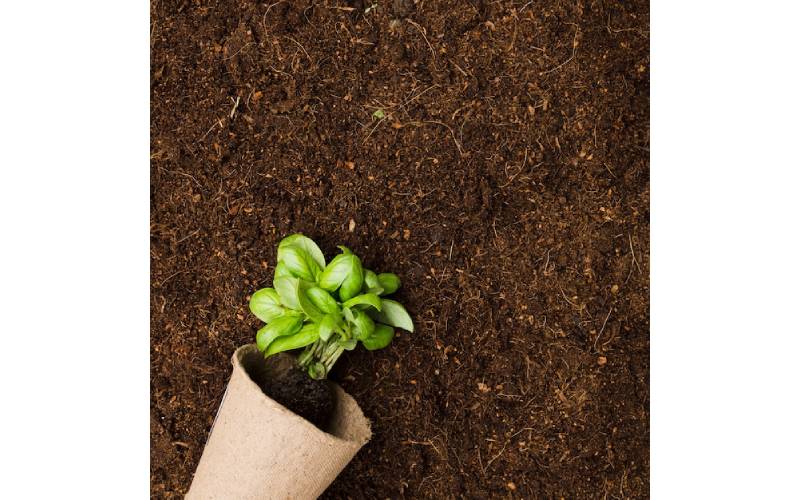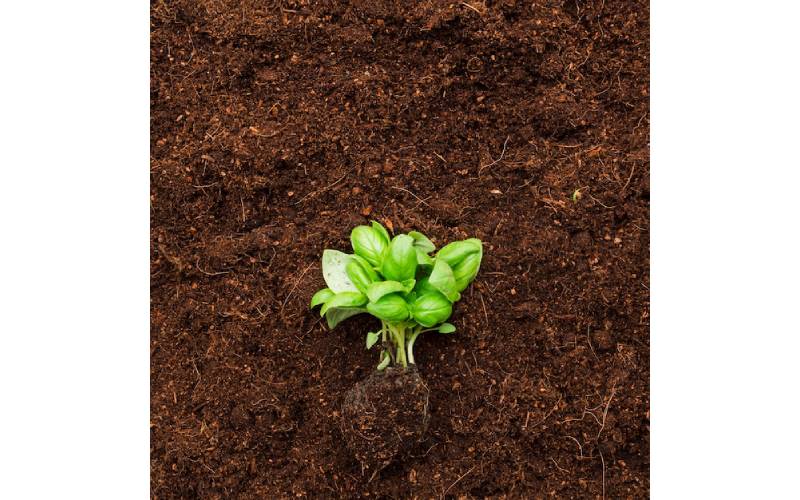Top soil is more than just a superficial layer of dirt; it is the cornerstone of any successful landscaping project. Its rich composition of organic matter, nutrients, and microorganisms makes it indispensable for plant health and growth. The primary benefit of top soil is its ability to provide plants with essential nutrients and a stable structure for root development. It improves soil aeration, water retention, and drainage, ensuring that plants receive adequate moisture and oxygen. Additionally, top soil supports beneficial microorganisms that help decompose organic matter and release nutrients into the soil. In landscaping, top soil is used to build garden beds, enhance lawns, and improve soil fertility. By incorporating high-quality top soil, landscapers can create vibrant, healthy environments that support a diverse range of plant species and contribute to the overall beauty and functionality of outdoor spaces.
Top Soil Secrets: How To Enhance Soil Quality For Thriving Gardens?
Enhancing soil quality is a key factor in creating thriving gardens, and top soil plays a pivotal role in this process. One of the secrets to improving soil quality is ensuring that the top soil is rich in organic matter. Adding compost or well-rotted manure to the top soil can significantly boost its nutrient content and improve its texture. Organic matter helps to retain moisture, improve soil structure, and increase the availability of essential nutrients for plants. Another important aspect is to ensure proper soil pH levels. Testing the soil and adjusting the pH with lime or sulfur, as needed, can create optimal conditions for plant growth. Additionally, incorporating mulch into the top soil can help regulate soil temperature, retain moisture, and suppress weeds. By following these strategies, gardeners can enhance the quality of their top soil and create a more productive and sustainable garden environment.

Top Soil: What Every Gardener Needs To Know?
Top soil 101 is a fundamental guide for every gardener looking to create a successful and sustainable garden. Understanding the basics of top soil, including its composition and characteristics, is essential for making informed decisions about soil management. Top soil is typically composed of a mixture of sand, silt, clay, and organic matter, which together create a fertile and well-draining medium for plant roots. Knowing the texture and nutrient content of your top soil can help you choose the right plants and amend the soil as needed. Regularly testing the soil for nutrients and pH levels can provide valuable insights into its health and help you make necessary adjustments. Additionally, understanding the importance of organic matter and how to incorporate it into the top soil can improve soil structure and fertility. By mastering these basic principles, gardeners can ensure that their top soil provides the ideal conditions for plant growth and garden success.
Top Soil And Your Plants: How To Achieve Optimal Growth?
Top soil plays a crucial role in achieving optimal plant growth by providing a stable and nutrient-rich environment for roots. To maximize plant health and productivity, it is important to focus on several key factors related to top soil. First, ensure that the top soil has adequate drainage to prevent waterlogging and root rot. Proper drainage can be achieved by incorporating organic matter and using raised garden beds if necessary. Second, regularly amend the top soil with compost or other organic materials to replenish nutrients and improve soil structure. This practice helps to maintain a balanced nutrient profile and supports healthy root development. Third, monitor and adjust soil pH levels to ensure that plants can access essential nutrients. Most plants thrive in slightly acidic to neutral soil, so testing and amending the pH as needed is crucial. By addressing these factors, gardeners can create a top soil environment that supports robust plant growth and a flourishing garden.
How Top Soil Can Transform Your Garden?
Top soil has the power to transform any garden by creating a fertile and thriving environment for plants. A comprehensive guide to using top soil involves understanding its benefits and how to effectively incorporate it into various gardening projects. Start by assessing the current condition of your garden soil and determining its needs. If the existing soil is poor or depleted, adding a layer of high-quality top soil can significantly improve its structure and nutrient content. For new garden beds, create a mix of top soil and compost to build a rich, well-draining medium that supports plant growth. In lawns, top soil can be spread over existing turf to enhance soil fertility and promote a lush, green appearance. Additionally, using top soil in raised garden beds can provide better control over soil quality and drainage. By leveraging the benefits of top soil, gardeners can achieve a stunning transformation in their outdoor spaces and enjoy a more productive and beautiful garden.
Top Soil Vs. Potting Soil: What’s The Difference?
Top soil and potting soil are both essential components in gardening, but they serve different purposes and have distinct characteristics. Top soil is the uppermost layer of soil found in the natural environment, enriched with organic matter and nutrients. It is typically used for landscaping, garden beds, and lawns, where it provides a stable and nutrient-rich foundation for plants. Potting soil, on the other hand, is a specially formulated mix designed for container gardening and indoor plants. It often includes a blend of peat moss, vermiculite, perlite, and other additives to ensure excellent drainage and aeration. Unlike top soil, potting soil does not contain soil particles but rather a combination of materials that mimic soil properties. Understanding these differences is crucial for selecting the right growing medium for your plants. While top soil is ideal for creating and maintaining garden beds and landscapes, potting soil is better suited for pots and containers where drainage and aeration are essential.
Conclusion
Top soil is a fundamental element in gardening and landscaping, providing the necessary foundation for healthy plant growth and vibrant outdoor spaces. Its rich composition of organic matter, nutrients, and microorganisms makes it indispensable for creating fertile and productive gardens. By understanding the benefits and uses of top soil, gardeners can enhance soil quality, achieve optimal plant growth, and transform their green spaces into thriving landscapes. Whether you are building new garden beds, improving existing soil, or choosing between top soil and potting soil, having a comprehensive understanding of top soil will help you make informed decisions and achieve the best results for your gardening projects. Embracing the role of top soil in your gardening practices will lead to a more successful and rewarding gardening experience.

